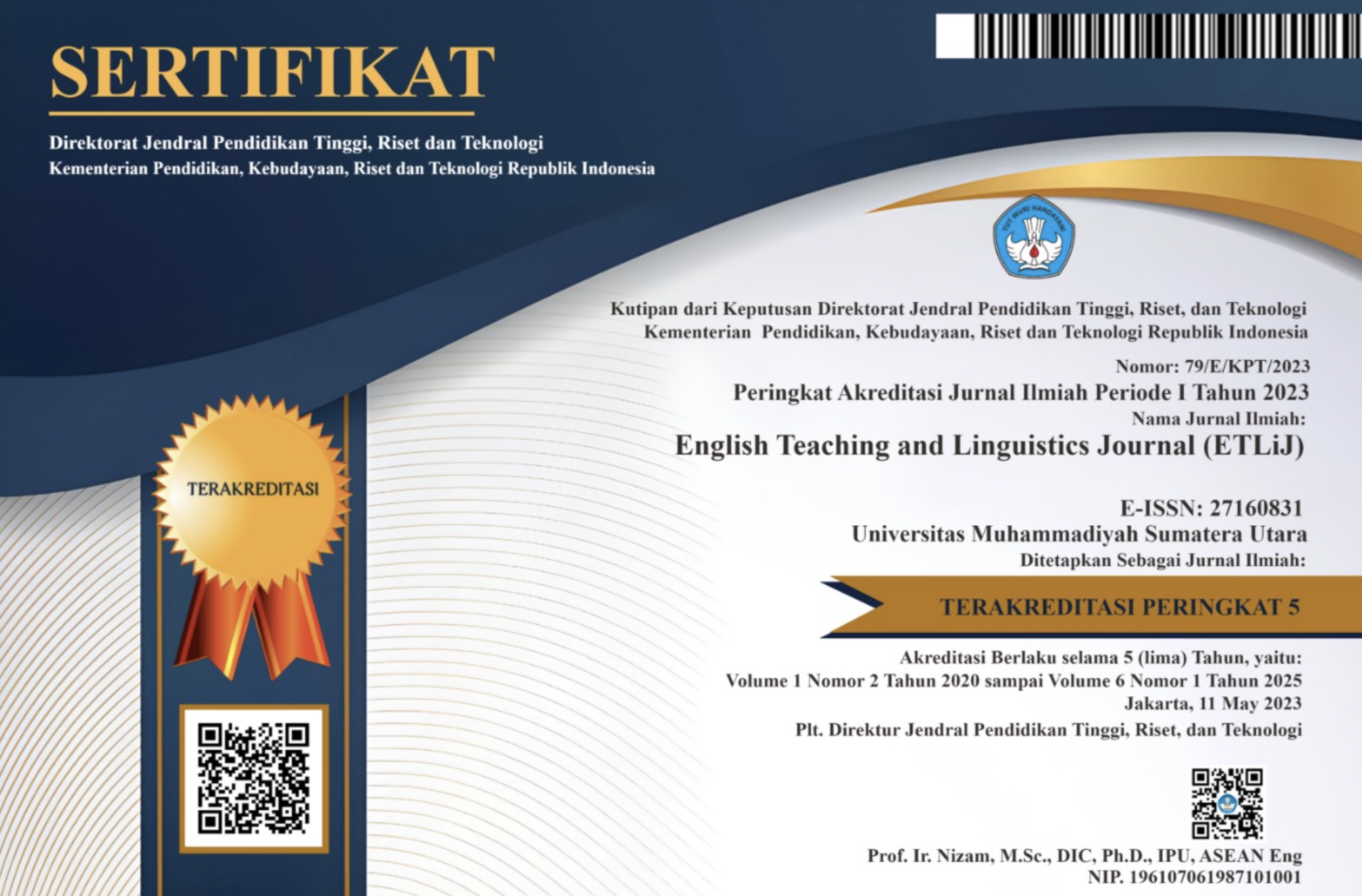Male and Female Family Social Addresses in The Minangkabau Tribes of Sumatera Barat, Indonesia
Abstract
Keywords
Full Text:
PDFReferences
Bucholtz, M. (2021). The displacement of race in language and gender studies. Gender & Language, 15(3).
Dewi, S. F., Montessori, M., Saputra, R. A., Farsalena, S., Fatmariza, F., Febriani, R., & Yulika, F. (2019). The Role of Culture in Cross-Cultural Marriage among Minangkabau Women. Journal of International Womens Studies, 20(9), 6882.
Fanany, R., & Fanany, I. (2018). The elderly must endure: Ageing in the Minangkabau community in modern Indonesia. ISEAS-Yusof Ishak Institute.
Firdaus, D. R. S. (2019). The coexistence between matrilineal family structures and the religious order of the Minangkabau community. Jurnal Komunikasi: Ikatan Sarjana Komunikasi Indonesia, 4(1), 1825.
Hall, J. K. (2013). Teaching and researching: Language and culture. Routledge.
Holmes, M. (2019). Gendered identities. In Routledge handbook of identity studies (pp. 185201). Routledge.
Hugo, G. J. (2019). Demographic and welfare implications of urbanization: direct and indirect effects on sending and receiving areas. Urbanization and Urban Policies in Pacific Asia, 136165.
Labov, W. (2019). The study of language in its social context. De Gruyter Mouton.
Li, S., Feldman, M. W., & Jin, X. (2004). Children, marriage form, and family support for the elderly in contemporary rural China: the case of Songzi. Research on Aging, 26(3), 352384.
Lubis, B. N. A., & Asnawi, A. (2021). Familys Addressing Male and Female Batak Toba Tribe in Indonesia. Randwick International of Education and Linguistics Science Journal, 2(2), 228232.
Oey-Gardiner, M. (2021). WHO CARES? Challenges of Women Aging in Contemporary Indonesia. In Older Women and Well-Being (pp. 167201). Springer.
Peoples, J., & Bailey, G. (2014). Humanity: An introduction to cultural anthropology. Cengage Learning.
Ramasubramanian, S., & Banjo, O. O. (2020). Critical media effects framework: Bridging critical cultural communication and media effects through power, intersectionality, context, and agency. Journal of Communication, 70(3), 379400.
Salliyanti, S., Susiolo, H., & Kudadiri, A. (2021). The kinship greetings of blood and marital ties in the Minangkabau community: A sociolinguistic study. Linguistics and Culture Review, 5(S3), 13561367.
Sumardi, A., & Qurrotaini, L. (2017). RAGAM KATA SAPAAN KEKERABATAN BAHASA MINANGKABAU DI ERA GLOBALISASI.
Vogt, K. C. (2020). The extended family in transitions to adulthood: a dynamic approach. Journal of Youth Studies, 23(9), 12341248.
DOI: https://doi.org/10.30596/etlij.v3i1.9328
Refbacks
- There are currently no refbacks.

This work is licensed under a Creative Commons Attribution 3.0 License
ISSN: 2716-0831





